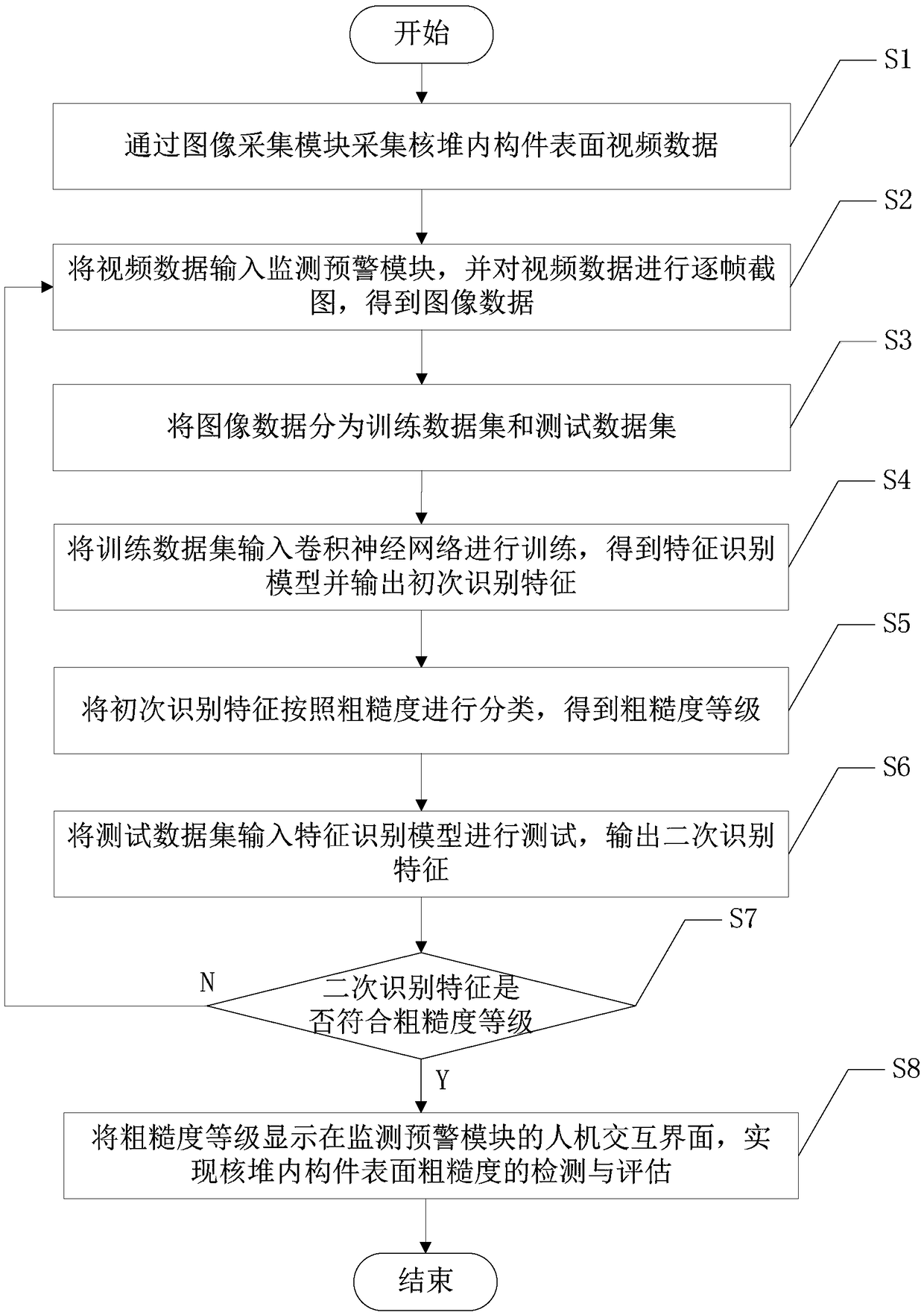Nuclear reactor internal component surface roughness assessment method based on convolutional neural network
A convolutional neural network and surface roughness technology, applied in neural learning methods, biological neural network models, neural architectures, etc., can solve the problem of high manpower investment, inability to guarantee the real-time and continuity requirements of material surface roughness, and low efficiency and other issues, to achieve the effect of improving efficiency, significant social and economic benefits, and avoiding personal safety
- Summary
- Abstract
- Description
- Claims
- Application Information
AI Technical Summary
Problems solved by technology
Method used
Image
Examples
Embodiment Construction
[0062] The specific embodiments of the present invention are described below so that those skilled in the art can understand the present invention, but it should be clear that the present invention is not limited to the scope of the specific embodiments. For those of ordinary skill in the art, as long as various changes Within the spirit and scope of the present invention defined and determined by the appended claims, these changes are obvious, and all inventions and creations using the concept of the present invention are included in the protection list.
[0063] In an embodiment of the present invention, a method for evaluating the surface roughness of nuclear reactor internals based on a convolutional neural network, such as figure 1 shown, including the following steps:
[0064] S1: Collect video data on the surface of nuclear reactor internals through the image acquisition module;
[0065] S2: Input the video data into the monitoring and early warning module, and take sc...
PUM
 Login to View More
Login to View More Abstract
Description
Claims
Application Information
 Login to View More
Login to View More - R&D
- Intellectual Property
- Life Sciences
- Materials
- Tech Scout
- Unparalleled Data Quality
- Higher Quality Content
- 60% Fewer Hallucinations
Browse by: Latest US Patents, China's latest patents, Technical Efficacy Thesaurus, Application Domain, Technology Topic, Popular Technical Reports.
© 2025 PatSnap. All rights reserved.Legal|Privacy policy|Modern Slavery Act Transparency Statement|Sitemap|About US| Contact US: help@patsnap.com



